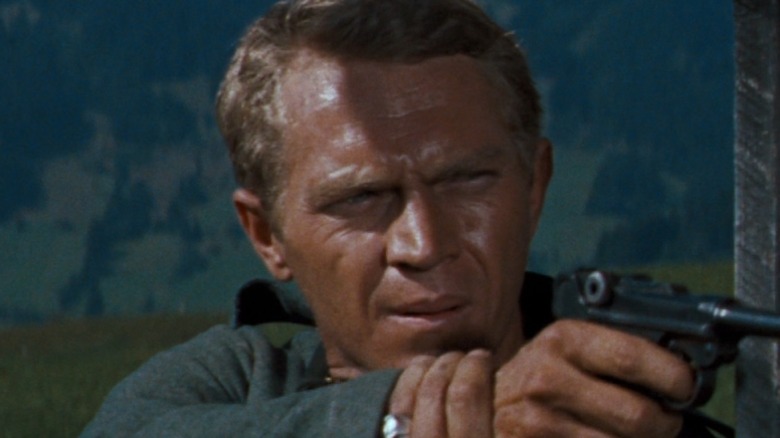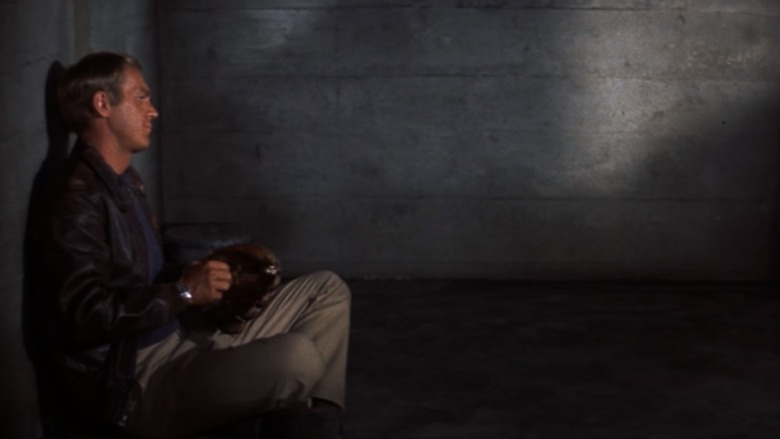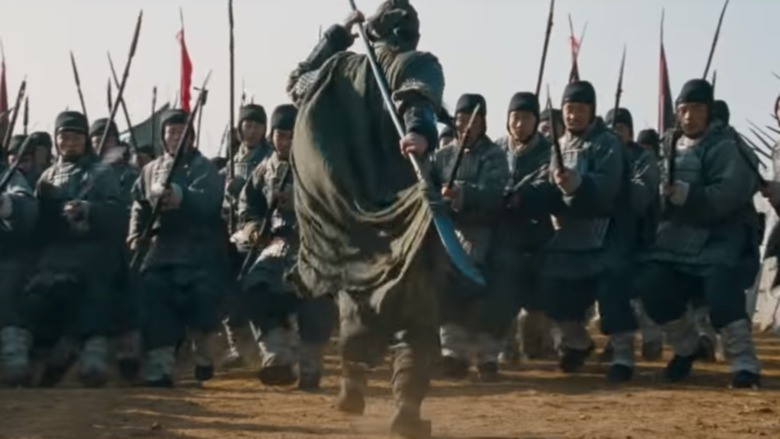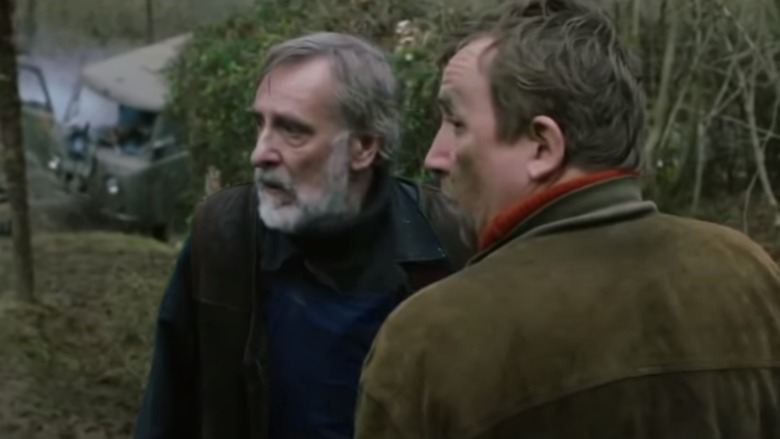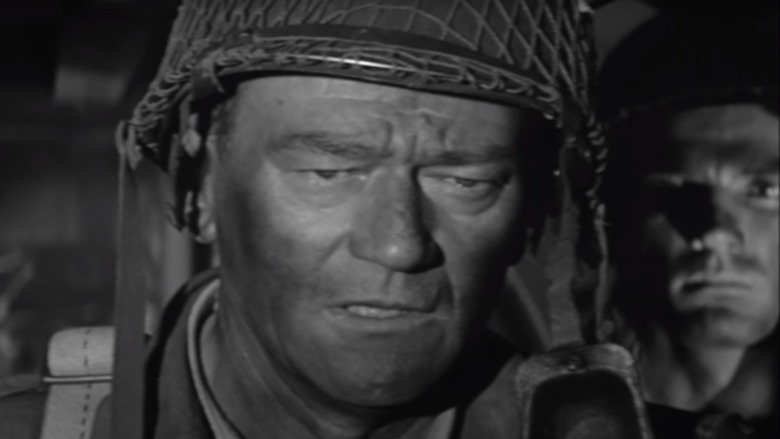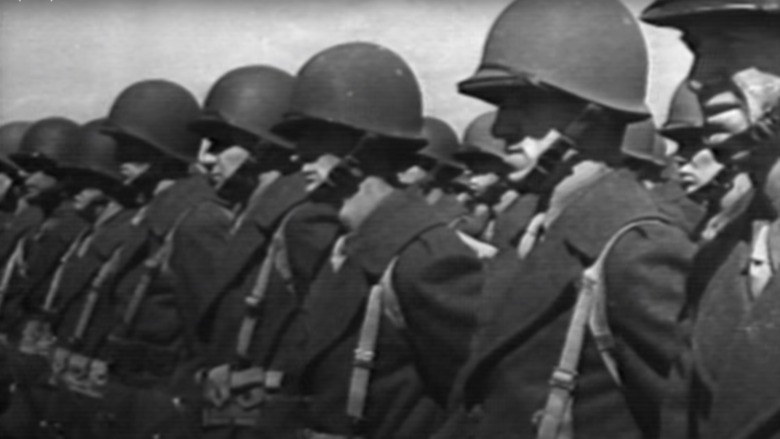The Best Free War Movies You Can Watch On YouTube Right Now
According to the "Rush Hour" soundtrack, war is good for absolutely nothing. But let's reexamine that assertion. When added to "heads," "war" gave us some of the most mouth-peelingly, tooth-disolvingly delicious candy of the 1990s. Liberally applied to the Stars, Wars became a multibillion-dollar entertainment franchise and Ewan McGregor's most reliable source of beer money. You can't spell "warthogs" without "war," so without international conflict, "Hakuna Matata" would have been a solo song without any jokes about gas.
And war gives filmmakers a dramatic backdrop to set their stories against, thanks to the inherent drama and thrill-a-minute high-stakes action that come part and parcel with the genre. Now, thanks to YouTube's ever-growing library of free-to-watch movies, there are more opportunities than ever to get deep into war movies, all for the impossible to beat price of no money at all. We combed through their list of complimentary motion pictures and hand-picked a list of some of the best flicks available now.
The Great Escape
"Come for the dramatized retelling of the honest-to-goodness bonkers escape from the Stalag Luft III prison camp. Stay for the shots of a guy jumping a Triumph TR6 Trophy motorcycle over a fence to escape encroaching Nazi persuers." That's what we always say.
If you're not familiar with the story of "The Great Escape," it's pretty incredible. Between 1943 and 1944, a group of over 600 allied soldiers in a German prison camp, united by the belief that "the only reason that God allowed us this extra ration of life is so we can make life hell" for the Nazis, worked to create three escape tunnels under their captors' noses. The proposed tunnels would run nine feet deep and hundreds of feet long, supported by boards taken from the prisoner's beds and ventilated through old fashioned MacGyver ingenuity.
1963's "The Great Escape" takes a lot of liberties with the story — Americans get an inaccurately gigantic seat at the table, while Canadians, who were an enormous part of the operation, are just about entirely unaccounted for, and there's plenty of extra drama smeared on top of the actual events. Still, if you've never seen it, it's one of the all-time classics.
Red Cliff
The word "epic" gets thrown around a lot, reappropriated as an acceptable adjective for describing nachos with more layers than usual or a drunk guy in a hat from Lids doing a sick trampoline flip. For a while, though, it was a word generally reserved for immense, breathtaking motion pictures. Also nachos, but just the truly phenomenal ones.
2008's "Red Cliff" is an epic film to its bones. Directed by John Woo, a filmmaker who once had the perspicacity and force of will to take Nicolas Cage's face off, it's a story 1800 years in the making. It tells the story of the Battle of Red Cliffs, one of the largest and most crucial fights in Chinese history, occurring at the tail end of the Han dynasty. Accounts of the battle have become increasingly dramatic in the centuries since it occurred, and Woo somehow manages to capture every facet of quasi-mythic combat. Imagine "300," but with an ever weirder sense of style, even crazier action, and, most importantly, clothes.
Tangerines
Set during the 1992-'93 War in Abkhazia and written and directed by Georgian native Zaza Urushadze, "Tangerines" comes by its heaviness honestly.
The setup: a pair of Estonian men are the last two members of their community who haven't relocated following the outbreak of hostilities — one wants to wait until his tangerine harvest is ready, marking the first of a handful of allegories on the subject of human suffering. The war comes to their doorstep when a small nearby firefight leaves one soldier from each side wounded and in need of help. As a result, two people, indoctrinated for years, are forced to come to terms with why they actually hate each other.
"Tangerines" received widespread acclaim when it came out in 2013, pulling nominations at the Academy Awards and the Golden Globes. No spoilers, but like any war movie with an interest in honesty, the ending is a stone-cold bummer that'll stick with you for a while.
The Longest Day
John Wayne? The events of D-Day? A hard G rating? "The Longest Day" has everything.
Images of the Normandy landings are more or less burned into the cultural consciousness at this point: Landing crafts on the shoreline met with heavy machine gun fire, thousands dead on both sides. Before "Saving Private Ryan" carved the scene into audience psyches with its high-budget, state of the art special effects, "The Longest Day" paid tribute to the events of June, 1944 in classic Hollywood fashion.
There's a lot to be said for "The Longest Day." The production utilized first-hand accounts from officers on both the Axis and Allied sides in the hopes of creating an accurate recreation of the drawn out conflicts. The result was an Oscar-winning, three-hour classic of the genre featuring some of the biggest stars of the era. The best summation of the picture came from the New York Times review, which stated: "It is hard to think of a picture, aimed and constructed as this one was, doing any more or any better or leaving one feeling any more exposed to the horror of war than this one does."
Why We Fight
It takes a special brand of righteousness to name your critique after the thing it's critiquing. "Reefer Madness: The Musical" pulled it off with the addition of a colon and a descriptor. "Why We Fight" just went full bore.
Named after a series of American propaganda films from the 1940s, "Why We Fight" is what it says on the tin: An exploration of the United States and its seemingly endless fascination with exploding other people. Opening with Dwight D. Eisenhower's farewell address pleading for an end to constant international conflict, the picture takes viewers through the history of U.S. military interventions and the reasoning behind them. Maybe you'll agree with the documentary's assertion that America is locked into a decade-by-decade addiction to combat at an economic level. Maybe, if you're young enough, you'll see a Gore Vidal interview for the first time, wonder who he was, and wind up stuck in an absolute page turner of a Wikipedia rabbit hole. Either way, it's compelling stuff.
